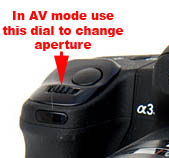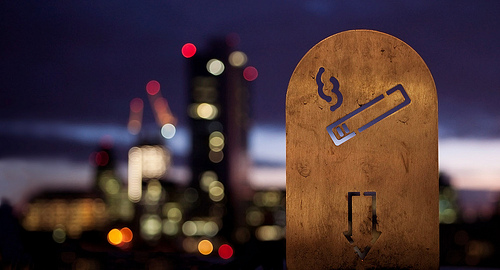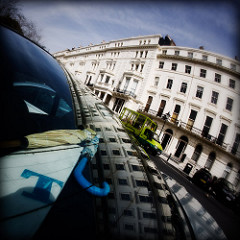Heather Buckley
21 Dec 2009
Aperture Priority or AV Mode - made simple

The first control we are going to get to grips with is your Aperture Priority control, the easiest way to control the aperture of your lens is by setting your camera to AV mode. In AV mode you can control the aperture value by turning the dial at the top right of your camera.
What is Aperture Priority - AV Mode?
When you change the aperture value you are increasing or decreasing the amount of light the lens lets in to hit the sensor of your camera.
Understanding Exposure

A wide aperture allows a small depth of field - you choose the bit that is in focus
A wide aperture can be set by choosing small numbers like F2.8 -F5.4 (the lowest value will depend on the quality or speed of your lens). Setting a wide aperture will let more light into your camera. If you have your camera in AV mode (aperture priority) you choose the aperture and the camera will calculate the right shutter speed to get a balanced exposure. A wide aperture (small numbers) also means that the amount of your image that will be in focus is limited. This is useful for portraits when you want your subject in focus and the background blurred or for picking out detail in a macro image like flower or insect photographs.
The out of focus background is sometimes called bokeh the above image is an example.

A small aperture allows a large depth of field - lots or your entire image in focus
A smaller aperture (big numbers like F/22) allows less light to pass through, so your shutter speed will be slower to let more light in. Be careful here - if your shutter speed gets too slow then you may get camera shake. A small aperture (big numbers) means that much more of your image will be in focus. This is useful for landscape photography when you may want the foreground and background to be in focus - you may need a tripod.
TOP TIP: When you are using a wide aperture (small numbers) you are in control of which bit of the image will be in focus. It may be the middle of an image or the front of an image, in portraiture it is usually the eye that should be the most focused part of the picture. If you point the camera at the bit you want in focus and only half press the shutter, recompose your image without taking your finger off the half depressed shutter and then take the shot, the bit you focused on first will stay sharp even though it is not in the middle of the picture.
Wide Apertures (Small Fstop numbers eg. 4.):
- You'll be able to shoot more often with just natural lighting.
- By allowing more light to pass through, the camera will be able to choose a slightly higher shutter speed which helps to reduce camera shake and motion blur
- A larger aperture reduces "depth-of-field" (the amount of area from front to back that stays in focus) good for blurred backgrounds
Small apertures (big Fstop numbers eg. f22):
- More of your image will be in focus
- Can be good if you are trying to capture motion blur
Note: Some zoom lenses will allow wider apertures when using a wide angle than when zoomed in. For example, the Nikon 18-200mm lens has a variable maximum aperture of f/3.5-f/5.6. When zoomed fully out at 18mm, the lens has an aperture of f/3.5, while when fully zoomed in at 200mm, the lens has an aperture of f/5.6.
Note: If you select a wide aperture and the lens can't get a balanced exposure because it is too bright and your camera can't find a fast enough shutter speed the LCD will flash, and your image will be overexposed. If you select a small aperture and there isn't a shutter speed long enough to get a good exposure your LCD will flash and your image will be underexposed. If your LCD is flashing look at it and adjust your aperture using the dial at the top right of your camera until it stops.
Note: The focal length of your lens will also affect how much of your image is in focus, wide angles will allow a greater depth of field and small apertures may not blur your backgrounds with really wide lenses, zooms on the other hand will blur much more of your background more about lenses later.
Later I will post about TV or S mode - shutter speed, when you get to grips with all the controls you may be interested in our Photoshop for beginners in Brighton, Sussex.